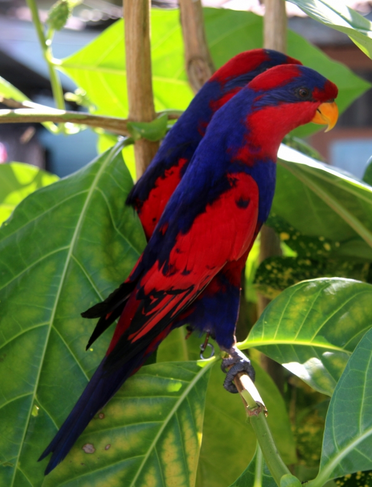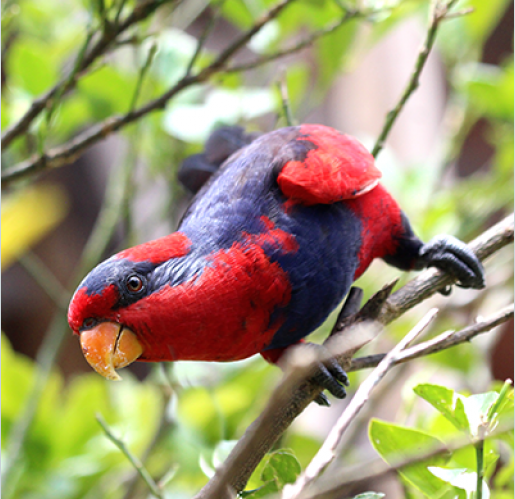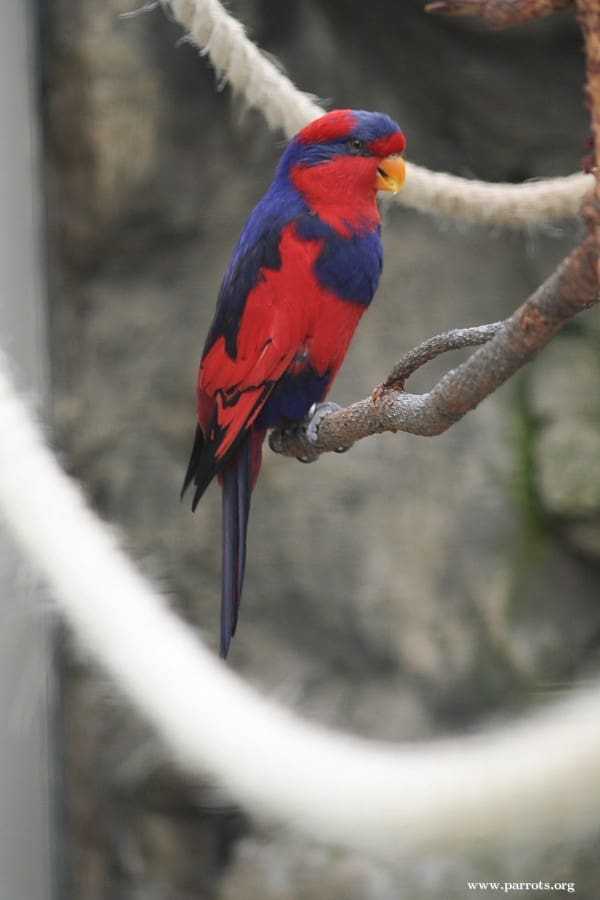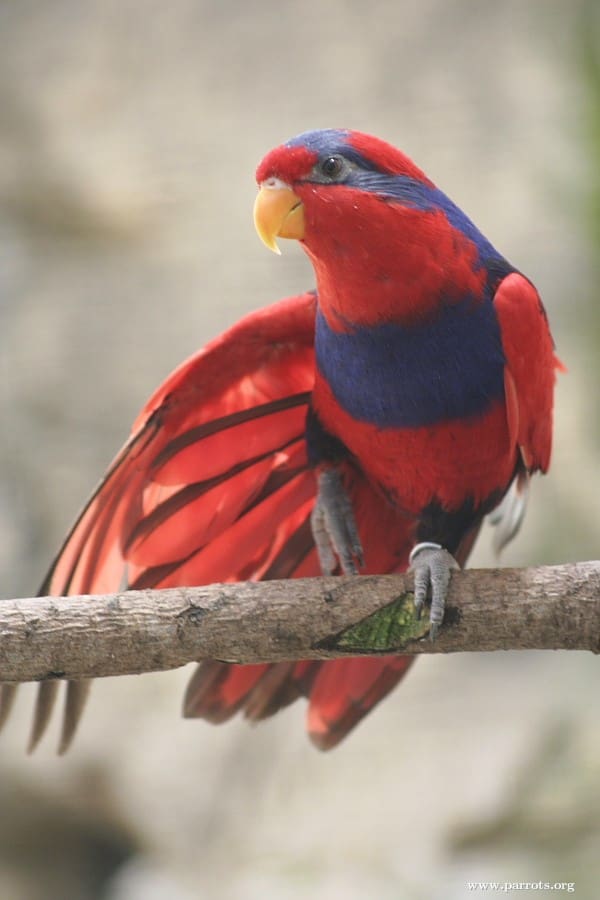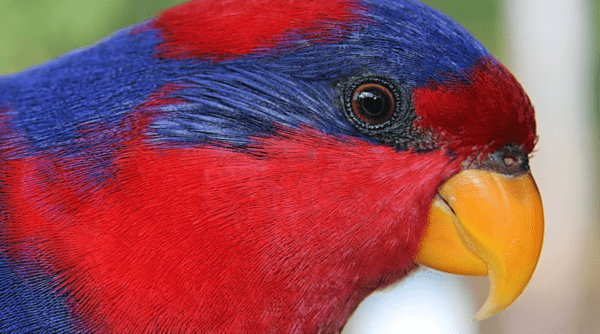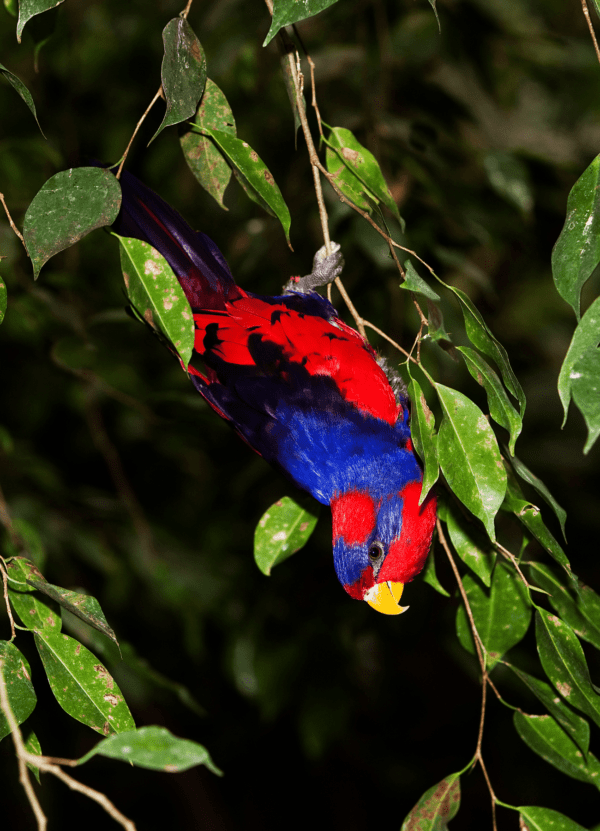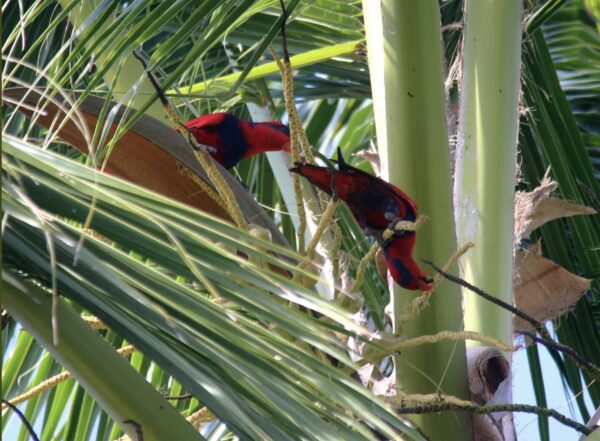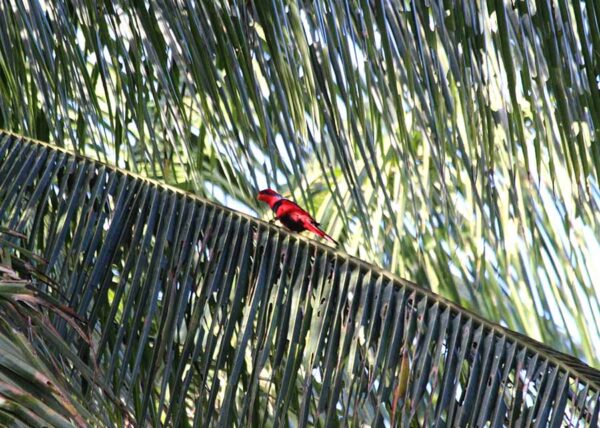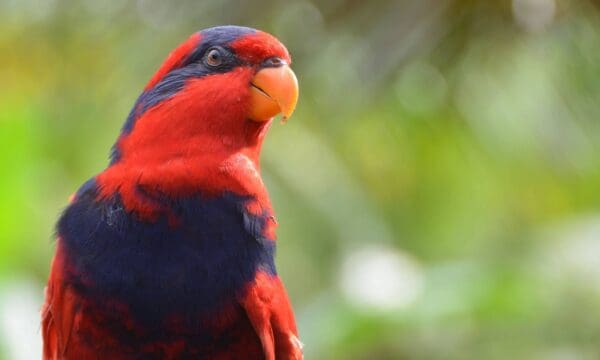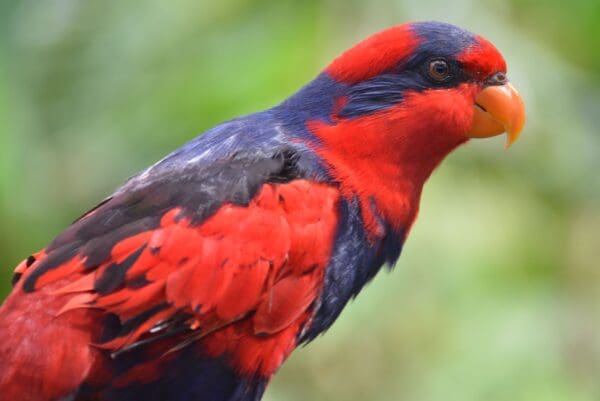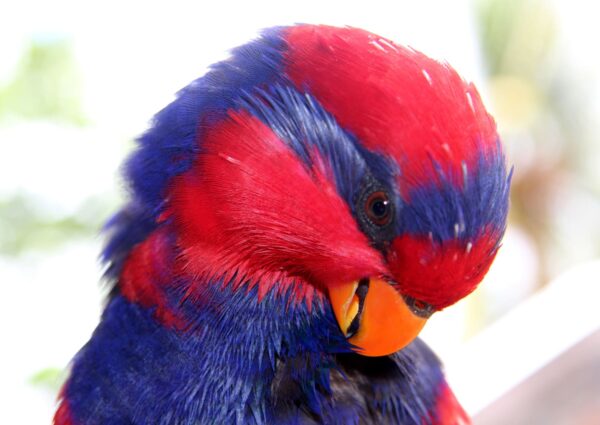Red-and-blue Lory
Also known as:
Blue-tailed Lory, Blue-diademed Lory
Also known as:
Blue-tailed Lory, Blue-diademed Lory
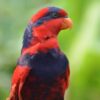
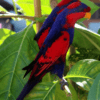
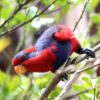
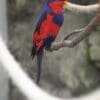
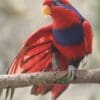

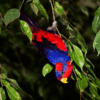
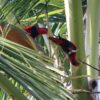
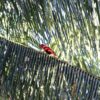
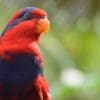
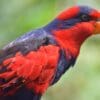
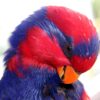
DID YOU KNOW?
Red-and-blue Lories are sometimes seen flying from one island to another across large expanses of ocean.

Eos

histrio
Size:
31 cm (12.1 in)
Weight:
150-185 g (5.25-6.5 oz)
Subspecies including nominate:
three: E.h. histrio, E.h. talautensis, E.h. challengeri
Colour Adult:
E.h. histrio: Both adults mainly red in colour; wide purple/blue band on hindcrown; blue/lilac band from eye through ear coverts and sides of neck, meeting dark blue/purple of mantle and upper back; wide blue strip across chest; thighs black; undertail coverts washed blue; red/purple tail. Eye red.
E.h. talautensis: Both adults as in histrio but with less black on wing coverts.
E.h. challengeri: Both adults less blue strip on breast mixed with red; blue band from eye not extending to mantle; smaller in size.
Colour Juvenile:
E.h. histrio: Blue wash on feathers of head and breast; blue on crown reaches nape and to below eyes; less obvious breast strip; thighs dull lilac. Eye brown.
E.h. talautensis: As in adults.
Call:
Screeches and whistles in flight, quiet while feeding.
More Information:
Content Sources:
CITES
Avibase
BirdLife International
Cornell Lab of Ornithology/Birds of the World
A Guide to Parrots of the World, Juniper and Parr, 1998
Parrots of the World, Forshaw, 2006. 2010 edition
Lexicon of Parrots, Thomas Arndt.
Parrots in Aviculture, Low, 1992.
Captive Status:
Very uncommon.
Longevity:
10-15 yrs.
Housing:
3 x 1 x 2 m (9.8 x 3.3 x 6.5 ft) enclosure with roosting box.
Diet:
Nectar made from baby cereal (lactose-free), honey and malt extract or molasses, mixed with water (bottled) with the addition of wheat germ, made fresh once or twice daily, or a proprietary type (store bought) for small species; as well fresh fruit such as: apple, orange, cactus fruits and bananas and a few vegetables (corn, green leaves, hardcooked egg, carrot).
Enrichment:
Hanging nectar bottles or cups around aviary, providing unsprayed browse with edible flowers, various chew and plastic toys (non-toxic); provide bowls of water for bathing.
Nest Box Size:
9″ x 9″ x 27″ (22.9 cm x 22.9 cm x 88.5 cm) vertical box.
Clutch Size:
2
Fledging Age:
8 weeks
Hatch Weight:
—
Peak Weight:
—
Weaning Weight:
—
World Population:
5500–14,000 mature individuals; E. h. histrio possibly extinct on Sangihe Is. Rapidly decreasing.
IUCN Red List Status:
Endangered
CITES Listing:
Appendix I
Threat Summary:
Restricted-range species. Habitat loss and overexploitation for trade have caused serious declines. Trapping, although illegal, continues with about 800 birds thought to be exported each year. The use of insecticides and the transmission of disease via escaped cage birds to wild populations have further been identified as potential hazards.
Range:
E.h. histrio: Sangihe Islands, Indonesia. Likely extinct.
E.h. talautensis: Talaud Islands, Indonesia.
E.h. challengeri: Nanusa Islands, Indonesia.
Habitat:
Forest and cultivated areas; up to 1250 m (4100 ft).
Wild Diet:
Diet includes coconut (Cocos nucifera) flowers and fruit and nectar of Ficus, Canarium, Lansium domesticum and Syzygium trees. Insects are also taken.
Ecology and Behaviour:
Most commonly seen flying in groups. Up to 8 birds seen. Large numbers gather together to roost. Very vocal at these gatherings.
Clutch and Egg Size:
2 eggs
Breeding Season:
April-May; also November-December depending on location. Nest is in hollow in large tree.
Related Links:
—

